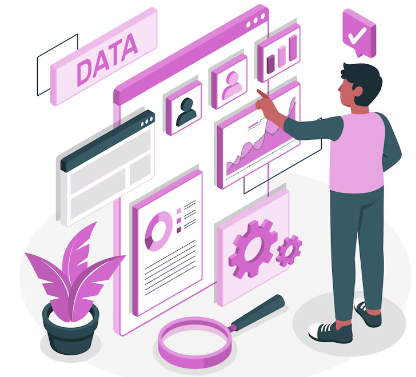Infosearch BPO is an exceptional data annotation service provider for machine learning and AI. With an in-house expert team of 400 annotators, we provide 50 MM data sets every month for various businesses. Visit our annotation services page, for more information. Contact us to dicsuss your queries.
An organization’s data is its most valuable asset in today’s fast-growing AI and ML business environment. However, it is not just any data that can be used; it has to be data that is properly categorized and named. This is where the data annotation comes in handy; a fundamental process that helps AI and ML models understand the world correctly. Just learn what data annotation is, the different methods you can use, and why the role of this process is critical for AI & ML projects in this complete tutorial.
Understanding Data Annotation
But, first, let’s understand what this buzz word, data annotation, really means.
Annotation is the act of providing information on raw data where it is usually’ classified or categorized. They can be of images, texts, videos, and audios, among others Since they contain a range of data types, the term data is applicable. Most AI and ML algorithms require labels to be attached to the data to enable analysis and learning. Annotation can be as basic as the recognition of the elements of the picture or as elaborate as the determination of the tone of the given text string.
The Qualities of Data Categorization
Data categorization can be defined as a subfield of data annotation that focuses on the categorization of data. It entails a process of categorizing data so that it can be easily managed by the algorithms. For instance, classifying articles under such areas as sports, politics or technology enables the AI decipher the various texts.
Why data annotation is so important for AI and machine learning
If there were no annotated data, the AI and ML models will be as useless as students who study without books. Here’s why data annotation is indispensable:
AI & ML Model Training
AI and ML models practice on cases. This is explained by data annotation, as it gives meaning to the collected data by giving some context to the raw data. The quality of the data annotation has a direct impact on the efficiency of the AI/ML dependent on it. If the data is not tagged well, the AI learns the wrong lessons, which in turn will give incorrect or biased outcomes.
Enhancing Accuracy and Reliability
Having correct data annotation entails that the AI and ML models make sound decisions that are based on credible and appropriate data. It removes ambiguity, which is very important for models to execute functions such as object recognition, speech recognition, and natural language processing accurately.
Facilitating Continuous Learning
Another aspect beneficial for AI and ML models is that the models could be modified in a never-ending learning loop where the new annotated data is used. This learning is important so as to master new situations and keep the efficiency of the assessment’s constant in the long term.
Data Annotation Techniques
It is decisive that there are different data annotation approaches based on the type of data and the expectations towards the AI/ML model. Here are some common methods:
Annotation of texts can be described as the task of tagging texts or text data. This can include activities such as sentiment analysis; text based on an emotion that the text conveys, or Named Entity Recognition which involves recognition and classification of words such as names of people or places.
For image and video type data, annotation means labeling objects in picture or in video, defining shapes usually called bounding boxes, and also 3D annotations if the data is more massive and complicated. This kind of annotation is important for all compute vision applications, which range from self-driving cars to facial recognition abilities.
In the process of audio annotation, one is required to transcribe and later label audible documents. This could include elements such as determining who is speaking in a conversation, defining emotions in talk, or distinguishing various noises in acoustic space.
Other Annotation Methods
There are other types of data annotation, such as semantic annotation, which involves associating data with certain concepts and entities for better categorization; and localization annotation, in which objects and their positions in space are identified and delimited.
Challenges of Data Annotation
In this context, it should be noted that the process of data annotation is not without risks and difficulties. Relying on high-quality annotations takes time and money; hence, undertaking this process can be very costly. It also may be costly, as most often it implies a major staff of annotators. However, there are additional drawbacks to consistency of annotations, and sometimes it is a challenging task to keep it consistent while handling a massive amount of data.
This present article depicts a probable scene in the field of data annotation.
At this point, it can be confidently stated that with the continuous development of AI and technologies based on it, in the foreseeable future, there will be an even greater need for accurate and high-quality annotated data. Recent advancement in technology also enable the use of semi-automatic tools for annotation of data and crowd sourcing platforms in a more efficient manner and at reasonable cost.
Conclusion
To bring this notion to life, data annotation remains the ground on which AI and ML models stand. It is a vital component that enables responsible technology to work for these unstructured data sources and make them intelligent by feeding him the right structure. With the ever-growing integration of AI and Machine Learning into various fields, data annotation remains one of the critical factors for organisation’s productivity enhancement.
Contact Infosearch to outsource data annotation services.








Recent Comments